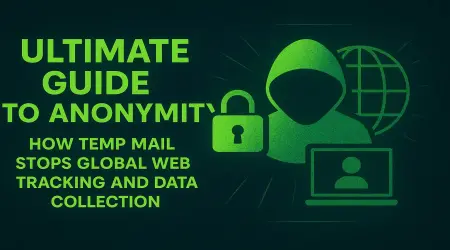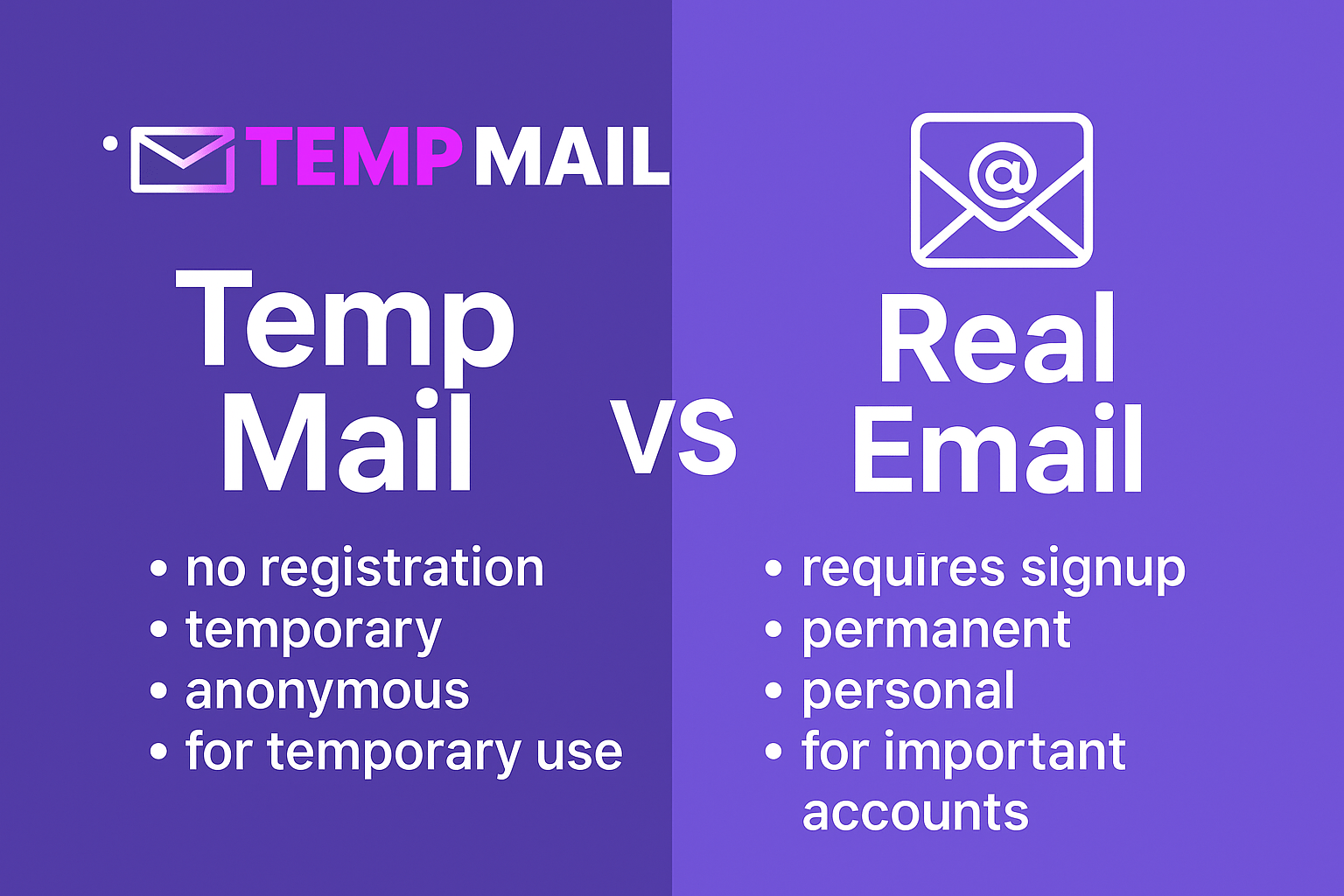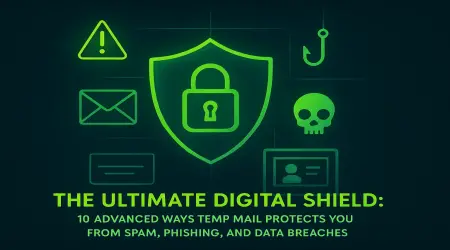

Temp Mail vs. Real Email: What’s the Difference and Which One Should You Use?
Introduction: Why This Comparison Matters
We use email for everything — from work and banking to online shopping and newsletter subscriptions. But not all email addresses serve the same purpose. If you've ever heard of Temp Mail and wondered how it differs from your regular Gmail or Yahoo inbox, you’re not alone.
In this post, we’ll explore the differences between temporary (disposable) email and real (permanent) email, so you can make better choices about how you manage your online presence in 2025.
What Is Temp Mail?
Temp Mail, also known as disposable email, is a free tool that gives you a short-term inbox without needing to register or share personal details. Services like Tempmaila.org allow users to instantly generate an email address for quick use — perfect for testing services, verifying accounts, or signing up for one-time offers.
No sign-up required
Automatically deletes messages after a short time
Designed for anonymous, non-personal use
Great for spam avoidance
What Is Real Email?
Real email refers to your permanent email address — the one you likely use for work, social accounts, and day-to-day communication. Examples include Gmail, Outlook, Yahoo, or custom business email domains.
Requires account registration and password
Can be used for long-term conversations
Linked to personal data and identity
Offers cloud storage, syncing, recovery features
Feature-by-Feature Comparison
| Feature | Temp Mail | Real Email |
|---|---|---|
| Registration | Not required | Required (name, phone, etc.) |
| Duration | Temporary (minutes to hours) | Permanent unless deleted manually |
| Privacy | Anonymous | Tied to your real identity |
| Inbox Security | Public or semi-private | Fully private with login credentials |
| Attachments | Often unsupported | Fully supported |
| Use Cases | Testing, quick signups | Work, personal, long-term messaging |
| Spam Protection | High (one-time use) | Medium (requires filtering) |
| Cost | Free | Free or paid (for advanced features) |
When Should You Use Temp Mail?
Temp Mail is ideal when you need to:
Sign up for a newsletter to receive a one-time discount
Download a file or guide that requires email input
Test a platform or submit a form temporarily
Avoid giving your real email to untrusted websites
👉 Bonus Tip: Use Temp Mail for giveaway entries — it helps avoid spam while still getting the benefit.
When Should You Use Real Email?
Stick to your real email when:
Registering for important services (banking, taxes, job applications)
Communicating with colleagues, clients, or family
Storing records, files, and cloud data
Receiving security alerts and password recovery options
⚠️ Warning: Never use Temp Mail for sensitive accounts — they can be accessed by others if the address is guessed.
Security & Privacy Considerations
While Temp Mail provides a layer of anonymity, it's not foolproof. Messages are usually accessible to anyone with the email address, and they expire quickly.
Real email accounts offer more security (like two-factor authentication), but also pose privacy risks if you’re not careful about where you share your address.
To maximize privacy:
Use Temp Mail for low-risk interactions
Use Real Email for high-trust, identity-linked tasks
Never mix the two for critical accounts
Conclusion: Choose Based on Purpose, Not Habit
In 2025, using just one email for everything is no longer practical or safe. Temp Mail and Real Email each have unique strengths, and smart internet users know when to use which.
If you care about your online footprint, inbox sanity, and data privacy — combine both tools wisely. For quick tasks and anonymous interactions, try Tempmaila.org — it’s free, fast, and keeps your real inbox clean.




